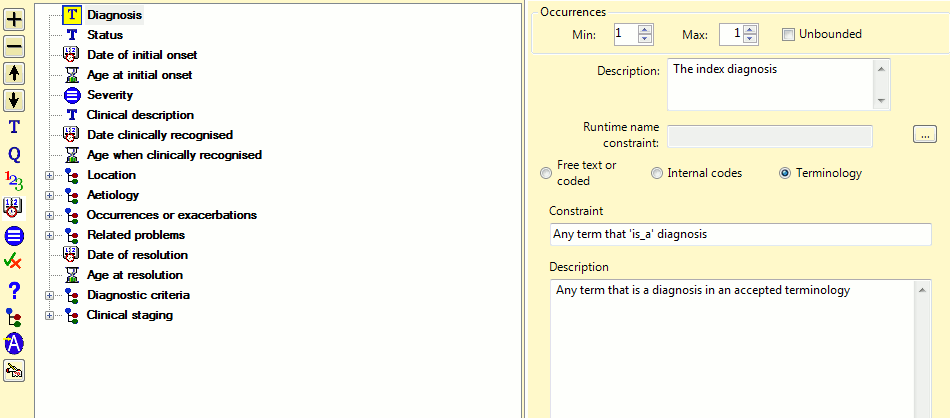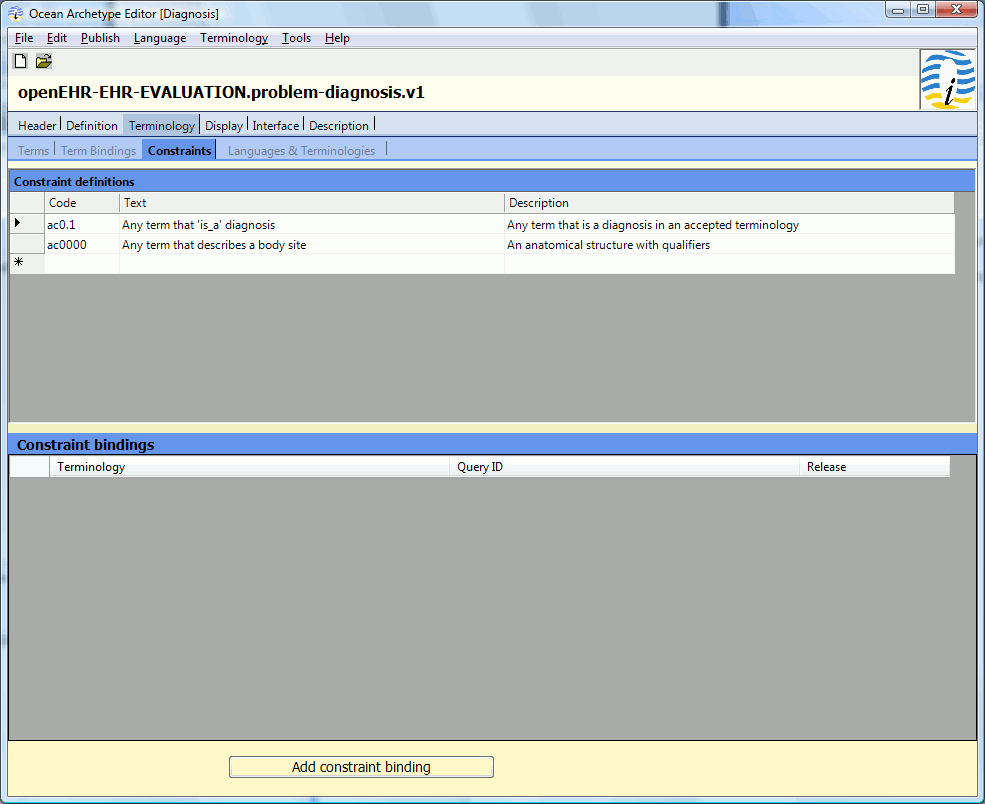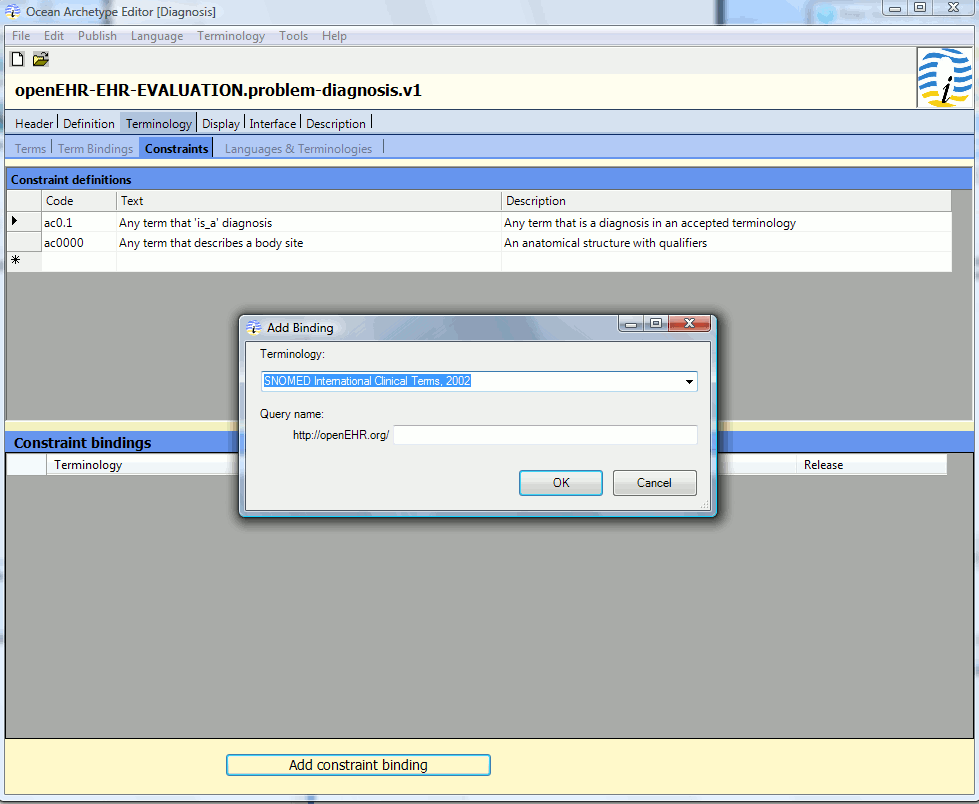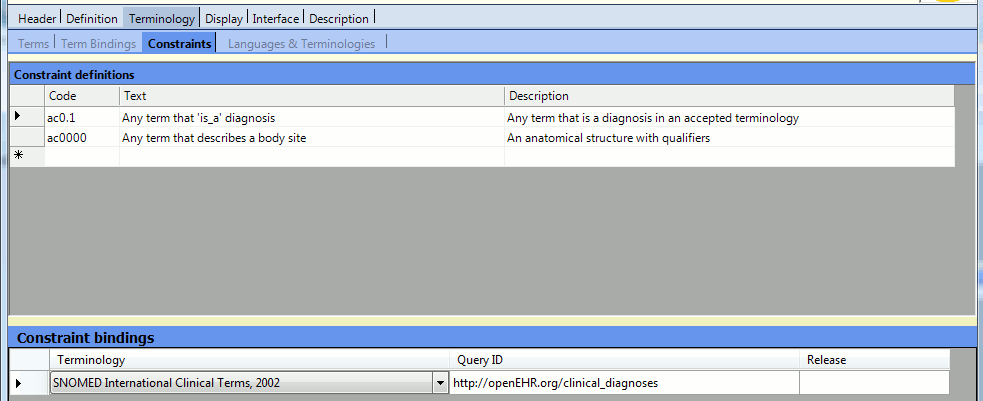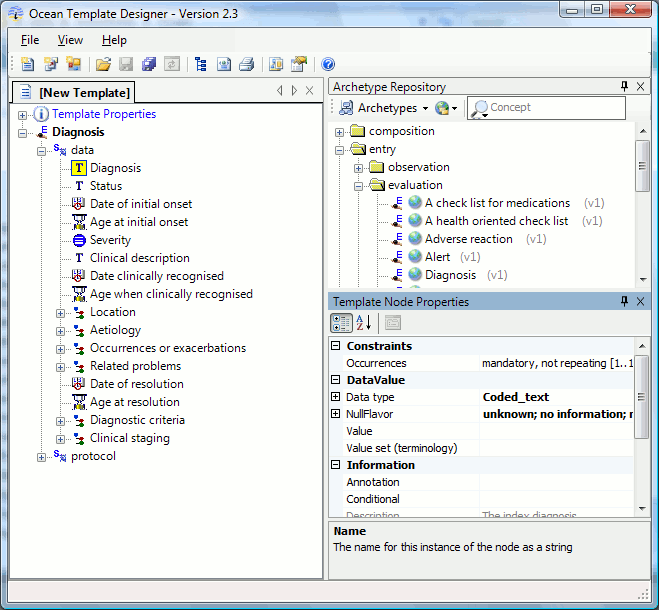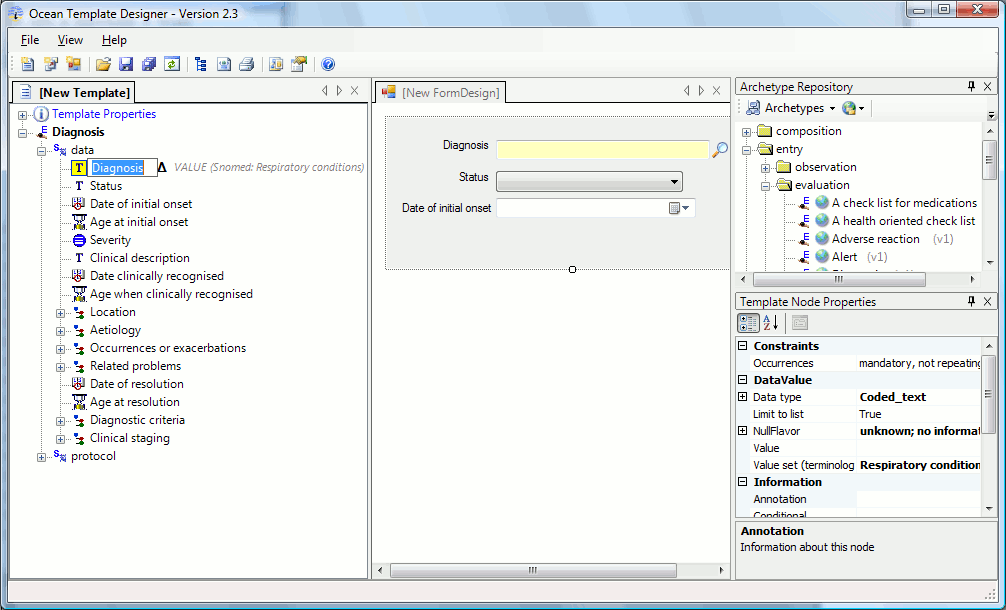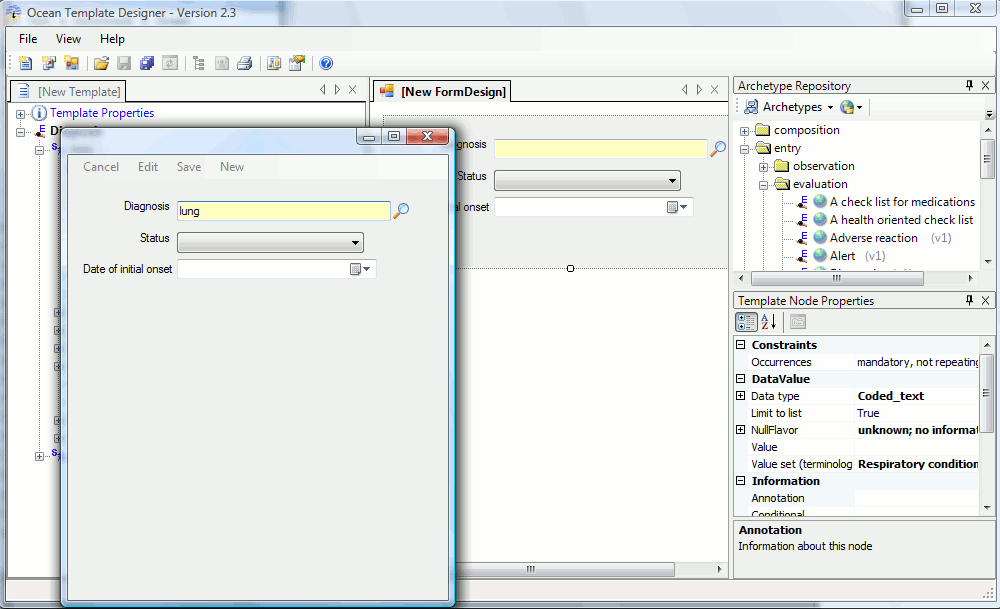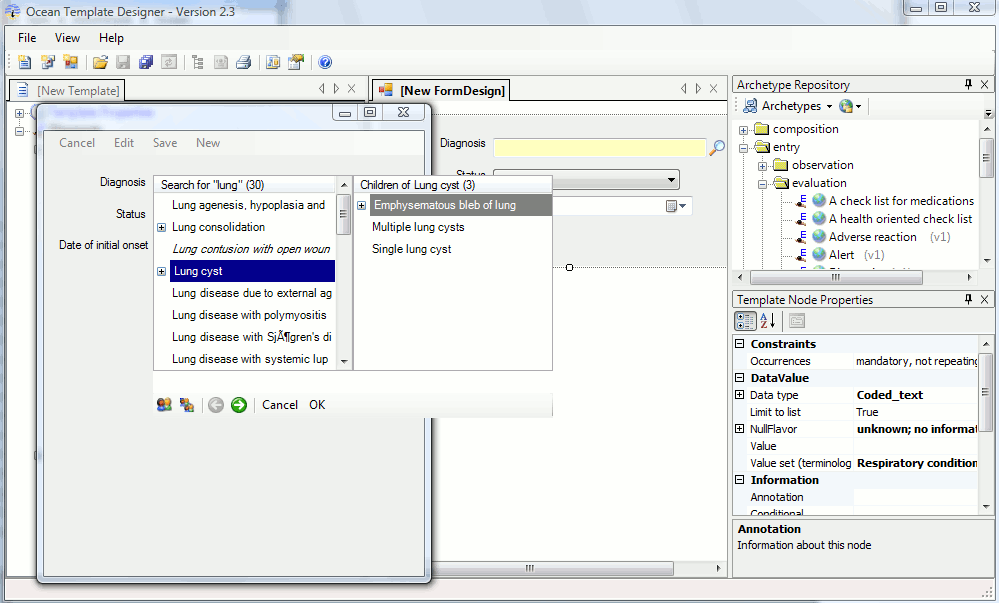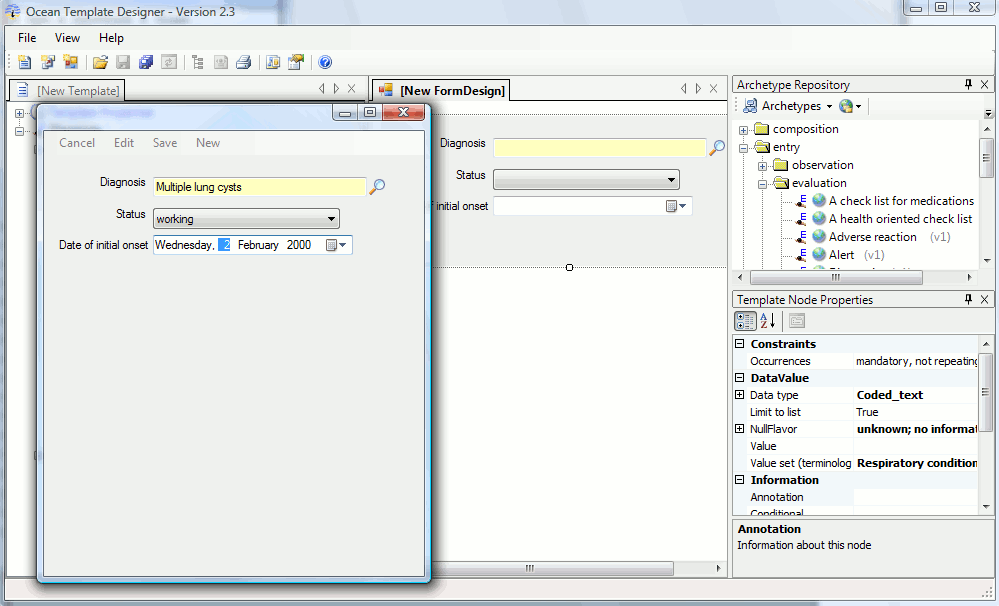...
You will have to provide a 'name' for the constraint and a description.
Now it is possible to provide a link (as a URL) to a particular terminology subset that is described elsewhere. To do this you need to go to the 'Terminology Tab' and then the 'Constraint Tab'.
You will see the acXXXX code you have added as a placeholder for the terminology subset with its description.
To add the constraint binding you press the 'Add constraint binding' button and choose the terminology that you want to bind to.
Then enter the tag or name of the subset at the openEHR.org URL. It is then possible to reuse the query set in other locations and also to have constrained terminology subsets using other terminologies as well.
In the
...
template
In the template environment it is possible to actually attach a subset to this data point. First the problem archetype is opened in a template designer.
Next, the Value set (terminology) is set using a lookup to a terminology server providing subsets.
An example subset of respiratory diagnoses is chosen - it is a SNOMED subset.
An example application form is then created and run.
A search for terms beginning with lung...
And only terms that are respiratory diagnoses are available - multiple lung cysts is chosen and other archetype attributes set...
...
The openEHR platform allows for terminology subsets to be 'prescribed' in the archetype and a registry of such subsets determined in archetypes will be maintained by the governing body (openEHR). We do not expect a very large number of such subsets to be set in this way. It is more likely for the foreseeable future that the majority of terminology binding will be done using templates.
